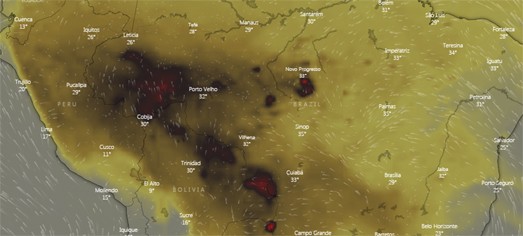Ever since David Cameron stated “I’ve had enough of all this green xxxx” (despite starting his Premiership with his hug a husky arctic trip) the conservative government has not considered reducing C02 emissions or fighting global warming as an important area to work on. Indeed having voted to leave the EU it is likely that they will be very little Parliament concentration left for this important fight in the next few years.
Continue reading “UK Local and National concerns conflict”The three forms of climate change denial
Climate change denial is a serious problem when trying to deal with global warming.
The problem is that the three different forms of climate denial often require different responses. While generally most, if not all, of the forms of denial do not stand up to any reasoned argument, they continue to be raised even by people who in other fields show a high level of intelligence. Few, however, are as all over the place as to use all three forms of denial.
Continue reading “The three forms of climate change denial”More bad news from the fires in Brazil
Unfortunately the bad news continues: due to the determined attack on indigenous reserves within the Brazilian Rainforest, and the continual push by Poachers and others into these reserves, now condoned by Bolsonaro the Brazilian president, the fires are burning and doing particularly significant damage within in indigenous reserves.
Continue reading “More bad news from the fires in Brazil”USA has given a hunter permission to bring back body parts of a lion from Tanzania

Up until 2010, hunters in the USA could bring back parts of the lions that they hunted to the USA. Under Obama the import of body parts from African hunts was banned because of their inability to get control of the poaching was going on.
However from the second that Trump came to power, despite giving a message on most things, he has been careful to promote hunting. If you wish to import body parts at the moment, you have to apply for a licence on each occasion.
Continue reading “USA has given a hunter permission to bring back body parts of a lion from Tanzania”An official in Brazil is shot for trying to protect indigenous people
As well as fires, Brazil’s president Jair Bolsonaro approach’s to protecting the Amazon has been shown to lead to problems. His stance of supporting farmers and loggers in their theft of land, both from national parks or indigenous tribal land has reached its ultimate and some would say obvious conclusion.
Continue reading “An official in Brazil is shot for trying to protect indigenous people”Following on from the fires in the Amazon Rainforest story – Bolsonaro is all over the place
For anyone who reads this blog regularly and read my initial article in the run up to his election, you will have seen that this is not the sort of leader that impresses me or many people around the world. He is regularly referred to as the ‘tropical Trump’, and this is generally not a label given as a compliment.
However the fallout from last week’s news has been substantial and he has thrown out many different things in an attempt to distract the news from what he did.
Continue reading “Following on from the fires in the Amazon Rainforest story – Bolsonaro is all over the place”The impact of unregulated damage to the Amazon rainforest

For regular readers of this blog you will have noticed that I have written about Jair Bolsonaro on a few occasions. Unfortunately the fears that I have expressed appear to be bearing out in the behaviour of his government and the problems they are encountering.
Continue reading “The impact of unregulated damage to the Amazon rainforest”The climate and global warming is rising in its importance amongst the British public
Concern about the environment has grown rapidly over the last few years, particularly after the visit of Greta Thunberg who raised concerns that had not been given the attention that they should have done by British politicians.
Continue reading “The climate and global warming is rising in its importance amongst the British public”News in brief
Just 10% of fossil fuel subsidies just would pay the green transition
There is a continuous claim made from all sides that the costs of going green are simply too high, and that green electrical generation and transportation will never be affordable without subsidies.
Now all evidence looked at so far shows this is not true, however, why is this a standard we are looking at given that we are still providing huge subsidies for fossil fuels?
Continue reading “News in brief”










